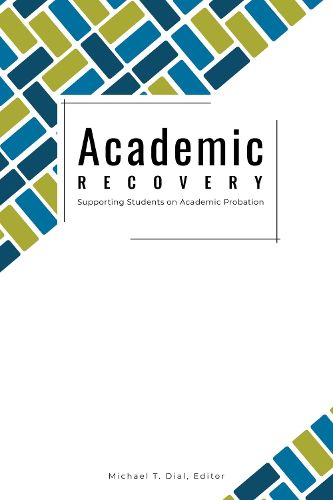Readings Newsletter
Become a Readings Member to make your shopping experience even easier.
Sign in or sign up for free!
You’re not far away from qualifying for FREE standard shipping within Australia
You’ve qualified for FREE standard shipping within Australia
The cart is loading…






Research suggests that as many as a quarter of all undergraduate students may find themselves on academic probation during their collegiate years. If students on probation choose to return to their institutions the semester following notification, they find themselves in a unique transitional period between poor academic performance and either dismissal or recovery. Effectively supporting students through this transition may help to decrease equity gaps in higher education. As recent literature implies, the same demographic factors that affect students' retention and persistence rates (e.g., gender, race and ethnicity, age) also affect the rate at which students find themselves on academic probation.
This book serves as a resource for practitioners and institutional leaders. The volume presents a variety of interventions and institutional strategies for supporting the developmental and emotional needs of students on probation in the first year and beyond. The chapters in this book are the result of years of dedication and passion for supporting students on probation by the individual chapter authors. While the chapters reflect a culmination of combined decades of personal experiences and education, collectively they amount to the beginning of a conversation long past due.
Scholarship on the impact of academic recovery models on student success and persistence is limited. Historically, attention and resources have been directed toward establishing and strengthening the first-year experience, sophomore programs, and student-success efforts to prevent students from ending up on academic probation. However, a focus on preventative measures without a consideration of academic recovery program design considering the successes of these programs is futile.
This volume should be of interest to academics and practitioners focused on creating or refining institutional policies and interventions for students on academic probation. The aim is to provide readers with the language, tools, and theoretical points of view to advocate for and to design, reform, and/or execute high-quality, integrated academic recovery programs on campus. Historically, students on probation have been an understudied and underserved population, and this volume serves as a call to action.
$9.00 standard shipping within Australia
FREE standard shipping within Australia for orders over $100.00
Express & International shipping calculated at checkout
Research suggests that as many as a quarter of all undergraduate students may find themselves on academic probation during their collegiate years. If students on probation choose to return to their institutions the semester following notification, they find themselves in a unique transitional period between poor academic performance and either dismissal or recovery. Effectively supporting students through this transition may help to decrease equity gaps in higher education. As recent literature implies, the same demographic factors that affect students' retention and persistence rates (e.g., gender, race and ethnicity, age) also affect the rate at which students find themselves on academic probation.
This book serves as a resource for practitioners and institutional leaders. The volume presents a variety of interventions and institutional strategies for supporting the developmental and emotional needs of students on probation in the first year and beyond. The chapters in this book are the result of years of dedication and passion for supporting students on probation by the individual chapter authors. While the chapters reflect a culmination of combined decades of personal experiences and education, collectively they amount to the beginning of a conversation long past due.
Scholarship on the impact of academic recovery models on student success and persistence is limited. Historically, attention and resources have been directed toward establishing and strengthening the first-year experience, sophomore programs, and student-success efforts to prevent students from ending up on academic probation. However, a focus on preventative measures without a consideration of academic recovery program design considering the successes of these programs is futile.
This volume should be of interest to academics and practitioners focused on creating or refining institutional policies and interventions for students on academic probation. The aim is to provide readers with the language, tools, and theoretical points of view to advocate for and to design, reform, and/or execute high-quality, integrated academic recovery programs on campus. Historically, students on probation have been an understudied and underserved population, and this volume serves as a call to action.